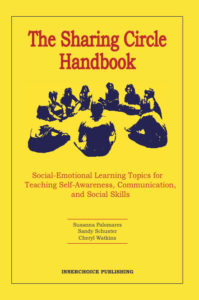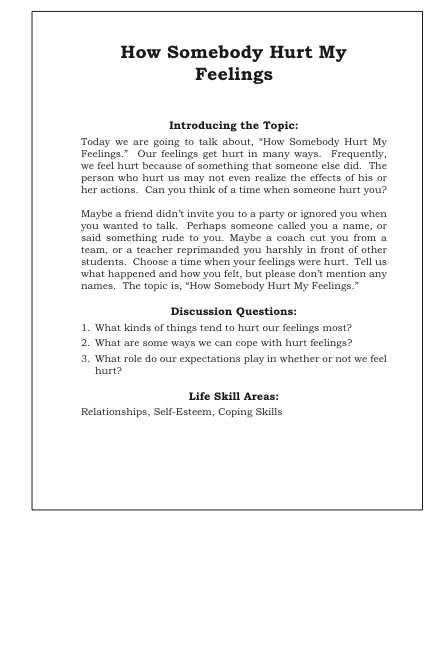Through self-awareness, students learn to give ongoing attention to their internal states, to know what they are feeling when they are feeling it, to identify the events that precipitate upsets and emotional hijackings, and to bring their feelings back under control.

Self-awareness allows students to manage their feelings and to recover from bad moods more quickly. Students who are self-aware don’t hide things from themselves. Labeling feelings makes them their own. They can talk about fear, frustration, excitement, and envy and they can understand and speculate concerning such feelings in others, too.
Lacking self-awareness, students may become engulfed by their feelings, lost in them, overwhelmed by them. Unawareness of what is going on in their inner and outer worlds sets the stage for lack of congruence between what they believe or feel and how they behave. Feelings of isolation (“I’m the only one who feels this way.”) occur when students are unaware that others experience the same range of feelings that they do. Without self-awareness students never gain control over their lives. By default, their courses are plotted by others or by parts of themselves which they fail to recognize.
Self-awareness can take the form of nonjudgmental observation (“I’m feeling irritated.”) or it can be accompanied by evaluative thoughts (“I shouldn’t feel this way” or “Don’t think about that.”) Although, in and of themselves, emotions are neither right nor wrong, good nor bad, these kinds of judgments are common and indicate that the neocortical circuits are monitoring the emotion. However, to try to abolish a feeling or attempt to take away a feeling in someone else only drives the emotion out of awareness, where its activity along neural pathways continues unmonitored and unabated — as neuroses, insomnia, and communication failures of all kinds testify.
Your Sharing Circle
Here’s a Sharing Circle for you that will let your students explore one aspect of self-awareness that they have experienced, and will continue to experience from time to time throughout their lives. It comes from The Sharing Circle Handbook, Topics for Teaching Self-Awareness, Communication, and Social Skills for students in grades K-12. The topic is, How Somebody Hurt My Feelings.
 Here’s Your Monday Morning Sharing Circle. Enjoy!
Here’s Your Monday Morning Sharing Circle. Enjoy!

Do you want more information?
• Leading a Sharing Circle
• Sharing Circle Rules
• Books and Resources
• Free Activities
• Subscribe
Go here:
Here’s How It’s Done
Gather everyone into a circle. Explain the rules for sharing, and get agreement from everyone that they will follow the rules.
Sharing Circle Rules:
- Everyone gets a turn to share, including the leader.
- You can skip your turn if you wish.
- Listen to the person who is sharing.
- There are no interruptions, probing, put-downs, or gossip.
- Share the time equally.
After everyone has shared, who wants to share, ask the discussion questions.
You can check the book out HERE.
Just click HERE to open a fully reproducible PDF of this activity and experience sheet…
If you like our blog resources and would like to receive them regularly, please subscribe here or on our website at www.InnerchoicePublishing.com
If you are already a subscriber, I hope you find this activity valuable. Help us grow our blog by sharing these activities and encouraging others to join. Thank you.
Thanks so much for reading!
Susanna
